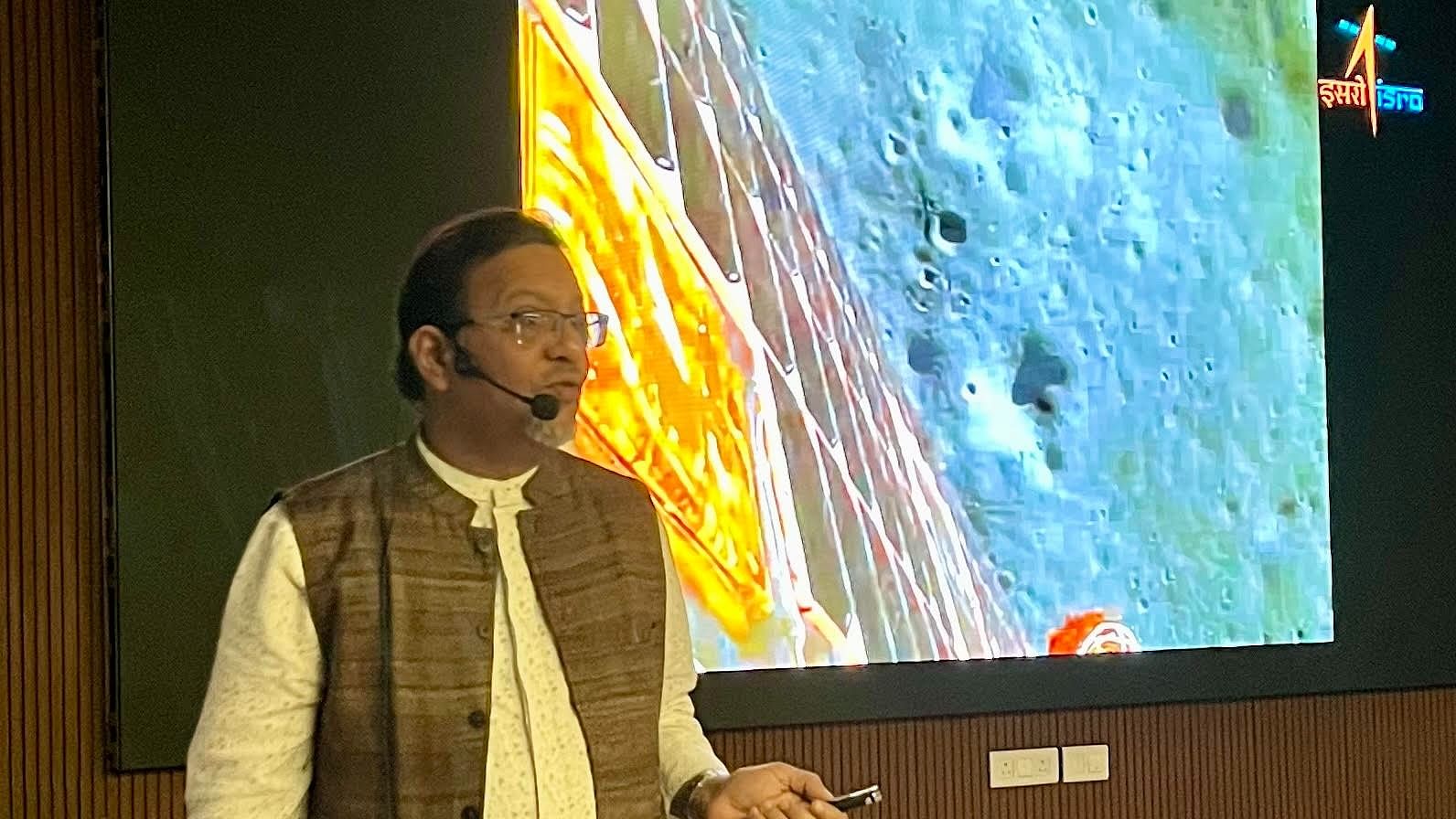
Prof Anil Bhardwaj.
Credit: ISRO
Bengaluru: The upcoming Lunar Polar Exploration (LUPEX) mission by ISRO and JAXA will serve as a precursor to India’s lunar sample return missions, Prof Anil Bhardwaj, director, Physical Research Laboratory (PRL), Ahmedabad, said here on Wednesday.
With LUPEX, ISRO and JAXA (Japan Aerospace Exploration Agency) aim to explore the moon’s permanently shadowed regions and determine the presence of water that could be a critical resource in future missions.
“This will be a precursor to Isro’s lunar sample return missions. We have shown capabilities in orbiting, landing and roving on the moon. What is next? We should aim to bring something back (from the moon),” Bhardwaj said during a public lecture on India’s lunar exploration programme at the Jawaharlal Nehru Planetarium.
The public lecture was organised as part of the 42nd annual meeting of the Astronomical Society of India.
Set tentatively for 2025, LUPEX will be launched on JAXA’s H3 launcher, with a 350-kg rover developed by the Japanese agency. ISRO is developing the lander. The instruments will be on the lander and the rover. Initial feasibility studies and the lander’s configuration have been completed. The rover will sample the soil with a driller and the samples will be analysed using equipment on the rover.
“This will be a mission spanning three to six months. The lander will be used for relaying all the science data, like we did in Chandrayaan,” Prof Bhardwaj said.
The Alpha Particle X-ray Spectrometer on Chandrayaan-3 was developed by PRL, an institution under the Department of Space. All the instruments in Chandrayaan-3 have worked very well and the quality of science coming out of the mission will be “very unique”, he said.